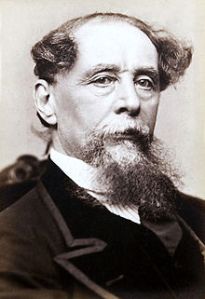On a dark, cold October night in 1857, Charles Dickens stepped out of his home in Tavistock Square at two o’clock in the morning, and walked to his country house, Gad’s Hill Place, near Rochester, some 30 miles away.
His route took him through Holborn, across Blackfriars Bridge to Elephant and Castle, before heading down the Old Kent Road and off to Rochester.
He was 45-years-old and the walk marked something of a crisis in the great writer’s life. It was the year that Dickens met 18-year-old actress ‘Nelly’ Turnan, a girl who was to become his mistress. Unable to publicly leave his wife of 20 years, for fear of scandal, Dickens set Nelly up in a villa that he could secretly visit.
Dickens knew the streets of London like the back of his hand, from the highest courts to the lowest slums, and the walk to Gad’s Hill took him just seven hours. The reason why he set off on these
long nocturnal rambles was his inability to get to sleep during this period. In his essay, Night Walks, he wrote: “Some years ago, a temporary inability to sleep, caused me to walk about the streets all night. I would get up directly after lying down, go out, and come home tired at sunrise. My principal object to get through the night.”
Most of Dickens’ walks took him through the city and into south London. “If we were very lucky,” he said, “a policeman’s rattle sprang and a fray turned up; but, in general, surprisingly little of this diversion was provided. Except in the Haymarket, the worst kept part of London, and about Kent-street in the Borough, and along a portion of the line of the Old Kent-road, the peace was seldom violently broken.”
It is believed that Dickens’ inability to sleep was partly due to the turmoil in his mind – created by his affair with Nelly and the desire to divorce his wife Catherine – but some experts now believe it might also have been caused by manic depression, also known as bipolar disorder, which is characterised by cyclic shifts in moods between mania and depression, and it is likely that he found walking to be the best antidote to the condition’s debilitating effects.
By this time Dickens was the most famous author in the world. He was wealthy and seemed to have it all, but after a very difficult childhood, which saw the author working in a blacking factory and living on his own when his father was thrown in prison, Dickens started falling into depressions with the start of each new novel.
His friends wrote that he became down every time he set to work on a new project, but his mood would gradually lift until he was in a kind of mania by the time he finished. Dickens depression seemed to worsen with age, and he eventually separated from his wife to live with Nelly. After he was involved in a train crash four years before his death, in which he assisted dying passengers before help came, his depression seems to have finally blocked his creativity, and his previously prolific output virtually ceased.
Whether this view of his mental health is true or not, the great writer undoubtedly had an affinity for the people in Bethlehem Hospital. During his night walks he would often walk pass the hospital and wonder whether there was really such a big difference between the people called insane within the hospital’s walls and the public who were free to walk outside. In Night Walks, he writes: “Are not the sane and the insane equal at night as the sane lie a dreaming? Are not all of us outside this hospital, who dream, more or less in the condition of those inside it, every night of our lives? Are we not nightly persuaded that we associate with kings and queens, emperors and empresses? Do we not jumble events, people, times and places, as they do? One afflicted man said to me, “Sir, I can frequently fly. I was half ashamed to reflect that so could I by night.”
As dawn approached Dickens would often enter a railway station to watch the morning mail come in.
“The station lamps would burst out ablaze,” he said. “The porters would emerge, the cabs and trucks would rattle to their places, and, finally, the bell would strike up, and the train would come banging in, knowing that sunrise was not too far away.” It was only when he could see that daylight was gradually approaching that Dickens could relax and begin to feel tired and finally go home to sleep.
Tim Russell

Pingback: In Dickens’ Footsteps: Blackfriars Bridge to New Cross | Walking Through London's History